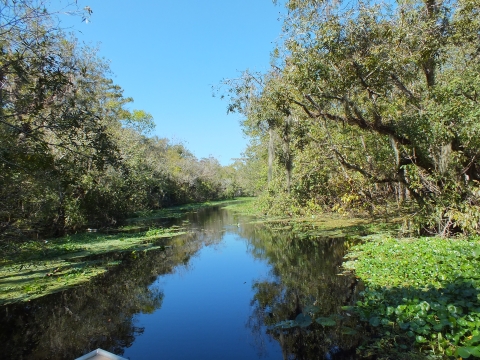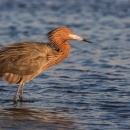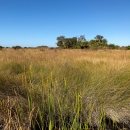About Us
Lake Woodruff National Wildlife Refuge was established in 1964 as a migratory bird refuge to offset losses of wetland habitat that were occurring in central Florida. The refuge is comprised of freshwater marshes, hardwood swamps, uplands, and numerous freshwater stream, lakes and canals. In the early years of the refuge, a small portion of the existing marsh was impounded to attract waterfowl and wading birds. The three impoundments provide loafing and foraging areas for migrating waterfowl and resident wading birds, and have proved to be one of the most popular areas for public use, providing opportunities for bird watching, hiking and fishing.
Wilderness
In 1976, four discrete areas of the refuge were designated as wilderness. A total of 1,066 acres of wilderness can be found within Bird Island, Audubon Island, Dexter Island and St Francis wilderness areas. In addition, just to the west of the refuge can be found the 7, 327 acre Alexander Springs wilderness area wilderness area
Wilderness areas are places untamed by humans. The Wilderness Act of 1964 allows Congress to designate wilderness areas for protection to ensure that America's pristine wild lands will not disappear. Wilderness areas can be part of national wildlife refuges, national parks, national forests or public lands managed by the Bureau of Land Management.
Learn more about wilderness area , designated in 1984 and managed by the U.S. Forest Service.
The Wilderness Act of 1964 created the National Wilderness Preservation System “in order to assure that an increasing population, accompanied by expanding settlement and growing mechanization, does not occupy and modify all areas in the United States, and it’s possession, leaving no lands designated for preservation and protection in their natural condition…”
For more information about Lake Woodruff's wilderness resources, please visit Wilderness Connect https://wilderness.net/visit-wilderness/?ID=308
Our Mission
Recognizing the high migratory bird benefits served by the lands and waters of the refuge, the U.S. Fish and Wildlife Service administratively designated Lake Woodruff NWR in 1963 under the Migratory Bird Conservation Act, outlining a primary purpose of these lands and waters:
"...for use as an inviolate sanctuary, or for any other management purpose, for migratory birds." 16 U.S.C. § 715d (Migratory Bird Conservation Act)
Our History
Lake Woodruff NWR is located near the historic Ponce de Leon Springs State Park, which was named for the famed Spanish explorer who may have led Spanish forces through the area in 1513 in his quest for the Fountain of Youth. Development of this area dates back to when the Spaniards cleared a small area, planted it in sugar cane, and built a mill to process the cane.
Prior to Spanish exploration, this area was occupied by the Timucuan Indians and their predecessors dating back 8,000 years. Evidence of their occupancy can be found across the refuge.
According to local sources, in 1804, William Williams moved from New Smyrna Beach to settle at Spring Garden, now known as DeLeon Springs, and was the first to raise corn and cotton. Farming operations occurred during the late 1800's on Tick Island, including an orange grove and cattle grazing.
After Florida became a United States territory in 1821, Major Joseph Woodruff bought out Williams' 2,020 acre share of Spring Garden in 1823. The lake became know as Lake Woodruff and the refuge was later named accordingly. In 1952 a private land developer made an abortive attempt to develop about 3,000 acres east of Lake Woodruff for agriculture. Levees were constructed and two 2,400 gallons-per-minute pumps were installed to drain the land. This venture was found to be impractical and was abandoned. The pine timber was removed from Jones Island in 1957-58. Pine, cypress, and oak timber were removed from Tick and Dexter Islands before the federal government bought the land. Prior to acquisition, timber and shell removal operations occurred on Tick Island.
In 1964 the Service began purchasing land for the refuge and over time, additional land was incorporated into the area presently occupied by the refuge.
Other Facilities in this Complex
Lake Woodruff National Wildlife Refuge is managed as part of the Merritt Island Complex.


